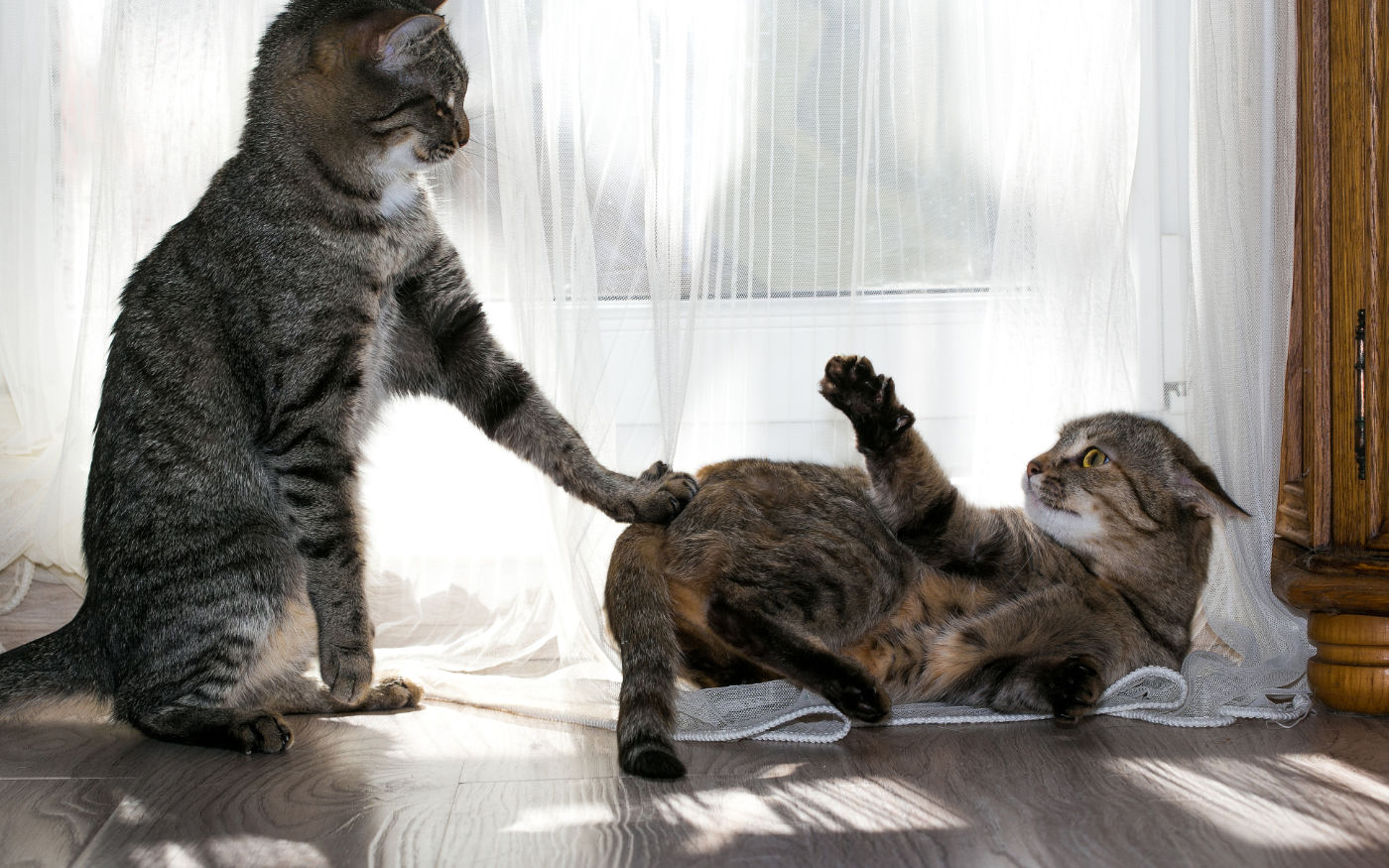 Dear Ms Kitty,
Dear Ms Kitty,
Our cat Abby used to be love to hang out with us, playing and purring. Ever since we got two other kittens and a dog, Abby doesn’t sleep with us anymore or stay with us in the office. In fact, she hides under the bed downstairs most of the time.
Do you think the other animals could have something to do with that?
Sad in Sterling
Dear Sad,
Abby didn’t choose to stop being a part of the family. She was probably pushed out. When we bring in new pets to our families, our resident cats don’t have a choice in the matter.
If introductions are abrupt and fast, both new and resident pets can end up with fearful reactions all around. Even with a good introduction, cat personalities can sometimes shift over time to where someone becomes unhappy. In cat research terms, the picked-on cat is often referred to as a pariah.
Cats are masters at giving off and reading subtle communication, so they pick up on things we may find easy to miss. Here are some types of bullies you might encounter in your own cat family.
 The Sandbox Bully
The Sandbox Bully
Let’s say a kitten develops a fascination with watching an older cat use the litter box. This may be only mildly annoying when the kitten is little, but as the kitten grows, it may only take a few times of chasing the older cat out of the box for the older cat to no longer want to use it. The result? Litter box issues for older cats, completely not their fault.
The Food Network Bully
Some cats are extra sensitive to any activity around their feeding stations. Even a sideways glance by a more powerful cat can push a lower status cat away. Some cats need way more time to eat than the dine-&-dash types.
Kitchen noises, walking by the bowl as the cat is trying to eat or changing their routines can also leave a cat hungry. An extremely shy or defensive cat can actually lose weight from feeling too unsafe to eat.

The Jock Bully
Some cats take playtime very, very seriously. If one cat is bigger or more confident than the other (or just acts like he is!), the chances of a smaller or more shy cat being bullied are increased.
Cats need daily playtime just like dogs need to go on walks, but most cats do best in one-on-one play sessions. Cats hunt solo, so they don’t have a pack mentality. Trying to make group of cats play together can be a setup for the more confident cat to bully the less confident.
 The Goldilocks Bully
The Goldilocks Bully
This bully is always looking for a better place to sleep, usually where someone with less status is already sleeping.
Getting them to move can be as simple as sniffing at a tail or staring, forcing the lower status cat to find another place to sleep. This can repeat until that cat is stuck in the least valuable place in the house.
The Jealous Lover Bully
This cat wants you all to himself. If you’re paying attention to another cat, he may glare, step in, or maybe even start a fight so the first cat leaves.
Bullies don’t have to take over. Abby’s behavior can be shifted! Try some of these techniques to stop the bullying:
- Provide Ample Resources
If you have one cat and you bring home another one without adding resources, you have just halved your first cat’s territory. That includes not only litter boxes, but scratchers, bedding, nests, feeding stations, toys and–most importantly–their people family.The best way to keep many cats happy is to make sure they have more than enough resources. Cat status can shift daily. Each cat should have his or her own things plus extras, so even when the status shifts, each cat stays secure. - Spread out the Resources
Keeping resources all in one place is one of the quickest ways to start a bullying situation, like all the litter boxes in one room or all the food bowls together. This forces your cats to compete for their basic needs.
Again, because cats in the wild tend to be solitary, giving them plenty of space between boxes and food bowls and scratchers can help remove reasons for conflict. - Gently Step In
Dr. Temple Grandin says that we, as our cats’ guardians, are more like parents than we are power-grabbing “alpha” cats. Try to approach status conflicts the way a mom cat would with her kittens.First, stay calm and quiet. If your bully is picking on Abby and you yell or stomp, you may scare off the bully but also terrify Abby too.Think of how a mother cat “corrects” with a glance or trill. Quietly stepping between the cats or gently moving toward the aggressor will usually break up the altercation. - Use Rewards to Shift Behavior
Once you have stopped the aggression, reinforce the lower-status cat. Try giving Abby a treat or pets or some quiet playtime, whatever she prefers. This increases status while stopping the bullying.If you do this consistently, bullies learn the only thing they get from being mean to Abby is that she gets rewarded…and they don’t. - Spread the Love
Make sure that everyone in your family knows you cherish all of them. Take the time to entice Abby out from under the bed and play with or pet her.If the other cats barge in, gently move them away from her. Consider shutting them out to make sure everyone knows Abby deserves time out from under the bed with her favorite people.
It may take a little focus on your part, but you can shift the behavior of your cat tribe to help Abby get back her mojo. She’ll be a much happier kitty when you do!





